Insurance Instruments in Estimating the Cost Energy Assets with Renewable Energy Sources
Abstract
:1. Introduction
- Prioritizing energy solutions in order to provide electricity to medical clinics and first aid services;
- Providing communication to vulnerable consumers;
- Increasing reliable, uninterrupted, and sufficient energy production to prepare for a sustainable economic recovery.
2. Materials and Methods
- Electricity generation volumes at the RES facility;
- Construction and installation costs;
- Maintenance costs;
- Electricity tariffs;
- Repair schedule;
- Cost of equipment;
- Insurance costs;
- Operating costs;
- Exchange rates.
- −
- Taking a large number of risk factors into account, including insurance risks of the RES project. It allows one to simulate the impact of insurance risks on any indicators of the RES project;
- −
- Making it possible to include an assessment of uncertainty in project estimates and determine the integral impact of insurance risks on a RES project;
- −
- Making it possible to justify the decision for the need to implement the RES project or to revise it from the point of view of the possibility of its insurance. It allows one to choose a risk management strategy, either accepting the risk or transferring risks to insurance, while decision-making.
- −
- Combined insurance “against all risks” through all stages of the project life cycle from design, transportation, and construction to operation. The policy covers all project participants and covers not only material damage, but also the related loss of profit, as well as civil liability;
- −
- Unique for the Russian market, natural index insurance of lost revenue from lack of sun or wind;
- −
- Consulting services for the assessment of the technical and investment model of the project, as well as its certification [47].
3. Results
4. Discussion
5. Conclusions
- -
- Ensuring the implementation of innovative projects of state importance aimed at the development and implementation of new approaches in the field of nuclear power generation, hydrogen energy, renewable energy sources, as well as energy storage;
- -
- Ensuring the implementation of innovative projects of state importance aimed at creating a national system for high-precision monitoring and the utilization of climatically active gases, including to ensure legal regulation in the field of regulating emissions of such gases and environmental (low-carbon) transformation of economic sectors;
- -
- Ensuring the introduction of amendments to the legislation of the Russian Federation providing for the implementation, by the owners of industrial and other infrastructure facilities whose activities harm to the environment, of the timely elimination of such harm at all stages of the life cycle of these facilities, including financial support for the fulfillment of this obligation.
Author Contributions
Funding
Data Availability Statement
Conflicts of Interest
Appendix A
References
- Stiglitz, J. Growth with Exhaustible Natural Resources: Efficient and Optimal Growth Paths. Rev. Econ. Stud. 1974, 41, 123. [Google Scholar] [CrossRef] [Green Version]
- Stern, D.I. Modeling International Trends in Energy Efficiency and Carbon Emissions; Environmental Economics Research Hub Research Report 1054; The Australian National University: Canberra, Australia, 2010. [Google Scholar]
- Soimakallio, S.; Saikku, L. CO2 emissions attributed to annual average electricity consumption in OECD (the Organisation for Economic Co-operation and Development) countries. Energy 2012, 38, 13–20. [Google Scholar] [CrossRef]
- Stern, D.I.; Cleveland, C.J. Energy and Economic Growth. In Working Papers in Economics, No. 0410; Department of Economics, Rensselaer Polytechnic Institute, The Australian National University: Canberra, Australia, 2004. [Google Scholar]
- Cleveland, C.J.; Kaufmann, R.K.; I Stern, D. Aggregation and the role of energy in the economy. Ecol. Econ. 2000, 32, 301–317. [Google Scholar] [CrossRef]
- Costantini, V.; Martini, C. The causality between energy consumption and economic growth: A multi-sectoral analysis using non-stationary cointegrated panel data. Energy Econ. 2010, 32, 591–603. [Google Scholar] [CrossRef] [Green Version]
- Bretschger, L. Economics of technological change and the natural environment: How effective are innovations as a remedy for resource scarcity? Ecol. Econ. 2005, 54, 148–163. [Google Scholar] [CrossRef] [Green Version]
- Ackerman, F.; Daniel, J. (Mis) Understanding Climate Policy: The Role of Economic Modelling; WWF: Cambridge, UK, 2014. Available online: https://www.foe.co.uk/sites/default/files/downloads/synapsemisunderstanding-climate-policy-low-res-46332.pdf (accessed on 19 June 2021).
- ICF International. Economic Analysis of US Decarbonization Pathways: Summary and Findings; ICF International: Faifax, VA, USA, 2015. [Google Scholar]
- European Commission. A Framework Strategy for a Resilient Energy Union with a Forward-Looking Climate Change Policy. 2015. Available online: https://www.eea.europa.eu/policy-documents/com-2015-80-final (accessed on 17 November 2020).
- Barton, B.; Redgwell, C.; Ronne, A.; Zillman, D.N. Managing Risk in a Dynamic Legal and Regulatory Environment, Energy Security; Oxford University Press: New York, NY, USA, 2004; p. 5. [Google Scholar]
- Redgwell, C. International Legal Responses to the Challenges of a Lower-Carbon Future: Climate Change, Carbon Capture and Storage, and Biofuels. In Beyond the Carbon Economy. Energy Law in Transition; Zillman, D.N., Redgwell, C., Omorogbe, Y.O., Barrera-Hernandez, L.K., Eds.; Oxford University Press: New York, NY, USA, 2008; pp. 85–108. [Google Scholar]
- Tosun, J.; Biesenbenderm, S.; Schulze, K. Energy Policy Making in the EU Building the Agenda; Springer: London, UK, 2015. [Google Scholar]
- Morata, F.; Solorio, I. European Energy Policy: An Environmental Approach; Edward Elgar: Cheltenham, UK, 2012. [Google Scholar]
- Hildingsson, R.; Kronsell, A.; Khan, J. The green state and industrial decarbonisation. Environ. Politics 2019, 28, 909–928. [Google Scholar] [CrossRef] [Green Version]
- Renewable Energy Policy Network for the 21st Century (REN 21). Available online: https://sustainabledevelopment.un.org/partnership/?p=1619#:~:text=REN21%20is%20a%20global%20policy,in%20developing%20and%20industrialised%20economies (accessed on 19 June 2021).
- Harrison, G.; Whittington, H.W.; Wallace, R. Sensitivity of hydropower performance to climate change. Int. J. Power Energy Syst. 2006, 26, 1–21. [Google Scholar] [CrossRef]
- Saedi, A.; Thambirajah, J.; Pariatamby, A. A HIRARC model for safety and risk evaluation at a hydroelectric power generation plant. Saf. Sci. 2014, 70, 308–315. [Google Scholar] [CrossRef]
- Cook, B.R. Environmental Hazards: Assessing Risk and Reducing Disaster. Disasters 2010, 34, 589–591. [Google Scholar] [CrossRef]
- Kucukali, S. Risk assessment of river-type hydropower plants using fuzzy logic approach. Energy Policy 2011, 39, 6683–6688. [Google Scholar] [CrossRef]
- United Nations. Sustainable Development Goals. Clean Energy. Why Is It Important. Available online: https://www.un.org/ru/development/devagenda/pdf/Russian_Why_it_matters_Goal_7_Clean_Energy.pdf (accessed on 16 April 2021).
- Chovancová, J.; Vavrek, R. Decoupling Analysis of Energy Consumption and Economic Growth of V4 Countries. Probl. Ekorozw. Probl. Sustain. Dev. 2019, 14, 159–165. [Google Scholar]
- Chovancová, J.; Vavrek, R. (De)coupling Analysis with Focus on Energy Consumption in EU Countries and Its Spatial Evaluation. Pol. J. Environ. Stud. 2020, 29, 2091–2100. [Google Scholar] [CrossRef]
- Isoaho, K.; Moilanen, F.; Toikka, A. A Big Data View of the European Energy Union: Shifting from ‘a Floating Signifier’ to an Active Driver of Decarbonisation? Politics Gov. 2019, 7, 28–44. [Google Scholar] [CrossRef]
- European Commission. Overview of the European Energy System. 2021. Available online: https://www.eea.europa.eu/data-and-maps/indicators/overview-of-the-european-energy-system-3 (accessed on 16 April 2021).
- Eurostat. Energy Productivity. 2021. Available online: https://ec.europa.eu/eurostat/web/products-datasets/-/t2020_rd310 (accessed on 16 April 2021).
- Eurostat. Renewable Energy Statistics. Eurostat 2021. Available online: https://ec.europa.eu/eurostat/statistics-explained/index.php/Renewable_energy_statistics#:~:text=In%202019%2C%20renewable%20energy%20represented,the%202020%20target%20of%2020%20%25.&text=The%20share%20of%20energy%20from,27%20reached%208.9%20%25%20in%202019 (accessed on 16 April 2021).
- Pellerin-Carlin, T. The European Energy Union. Research Handbook on EU Energy Law and Policy; Edward Elgar Publishing: Cheltenham, UK, 2017. [Google Scholar]
- Meeus, L.; Purchala, K.; Belmans, R. Development of the internal electricity market in Europe. Electron. J. 2005, 18, 25–35. [Google Scholar] [CrossRef]
- Rozentale, L.; Blumberga, D. Methods for Evaluate Electricity Policy for Climate Perspective. Environ. Clim. Technol. 2019, 23, 131–147. [Google Scholar] [CrossRef] [Green Version]
- Vavrek, R. Evaluation of the Impact of Selected Weighting Methods on the Results of the TOPSIS Technique. Int. J. Inf. Technol. Decis. Mak. 2019, 18, 1821–1843. [Google Scholar] [CrossRef]
- Olczak, M.; Piebalgs, A. What to Expect from the 2020 Gas Package. Politics Gov. 2019, 7, 165–169. [Google Scholar] [CrossRef]
- Pukala, R. Use of neural networks in risk assessment and optimization of insurance cover in innovative enterprises. Eng. Manag. Prod. Serv. 2016, 8, 43–56. [Google Scholar] [CrossRef] [Green Version]
- Ministry of Economic Development of the Russian Federation. Available online: https://economy.gov.ru/ (accessed on 16 April 2021).
- Vavrek, R.; Chovancová, J. Energy Performance of the European Union Countries in Terms of Reaching the European Energy Union Objectives. Energies 2020, 13, 5317. [Google Scholar] [CrossRef]
- Mussapirov, K.; Jalkibaeyev, J.; Kurenkeyeva, G.; Kadirbergenova, A.; Petrova, M.; Zhakypbek, L. Business scaling through outsourcing and networking: Selected case studies. Entrep. Sustain. Issues 2019, 7, 1480–1495. [Google Scholar] [CrossRef]
- Kirillova, N.V.; Dorozhkin, A.V. The Perspectives of Implementing Digitization Technologies for the Insurance Risks Assessment. Available online: http://apps.webofknowledge.com/full_record.do?product=WOS&search_mode=GeneralSearch&qid=32&SID=C4p6Zm8sBGrVfy4ViBn&page=1&doc=1&cacheurlFromRightClick=no (accessed on 19 June 2021).
- Pukala, R.; Petrova, M. Application of the AHP Method to Select an Optimal Source of Financing Innovation in the Mining Sector. In Proceedings of the E3S Web of Conferences; EDP Sciences, Kemerovo, Russia, 14–16 October 2019; Volume 105, p. 04034. [Google Scholar]
- Bank of the Russian Federation. Insurance. Available online: https://www.cbr.ru/insurance/reporting_stat/ (accessed on 16 April 2021).
- Tsyganov, A.; Kirillova, N. Regional Aspect of the Russian Insurance Market. Econ. Reg. 2018, 14, 1270–1281. [Google Scholar] [CrossRef]
- Tsyganov, A.; Baskakov, V.; Yazykov, A.; Sheparnev, N.; Yanenko, E.; Grysenkova, Y. The impact of the bonus-malus system on the insurance ratemaking in the system of compulsory insurance of the responsibility of transport owners in Russia. Appl. Econom. 2019, 56, 123–141. [Google Scholar]
- Ministry of Energy of Russian Federation. Available online: https://minenergo.gov.ru/activity/statistic (accessed on 16 April 2021).
- Vassoney, E.; Mochet, A.M.; Comoglio, C. Use of multicriteria analysis (MCA) for sustainable hydropower planning and management. J. Environ. Manag. 2017, 196, 48–55. [Google Scholar] [CrossRef]
- Anderson, D.R. The Critical Importance of Sustainability Risk Management. Risk Manag. 2006, 53, 66. [Google Scholar]
- Zhang, S.; Sun, B.; Yan, L.; Wang, C. Risk identification on hydropower project using the IAHP and extension of TOPSIS methods under interval-valued fuzzy environment. Nat. Hazards 2013, 65, 359–373. [Google Scholar] [CrossRef]
- Xu, X.H.; Cao, J. Risk evaluation for complex ecological environment of large-scale hydropower engineering. Syst. Eng. Theory Pract. 2012, 32, 2237–2246. [Google Scholar]
- Guerritore, W.B. Insurance as a Risk Management Instrument for Energy Infrastructure Security and Resilience; Nova Science Publishers, Inc.: Hauppauge, NY, USA, 2013. Available online: https://www.energy.gov/sites/prod/files/2013/03/f0/03282013_Final_Insurance_EnergyInfrastructure.pdf (accessed on 19 June 2021).
- JSC IC Allianz. Available online: https://www.allianz.ru/ru_RU/shared/press-center/press-releases/allianz-v-rossii-zapustil-lineyku-produktov-po-strakhovaniyu-vozobnovlyaemykh-istochnikov-energii.html (accessed on 8 June 2021).
- Kirillova, N.V. Risk management systems in insurance companies. World New Econ. 2016, 10, 116–123. (In Russia) [Google Scholar]
- Tsyganov, A.; Kirillova, N.; Kurganov, V. Insurance Mechanisms of Financial Support in the Field of Energy Conservation Activities. Financ. J. 2016, 2, 100–110. [Google Scholar]
- Stern, D.I.; Kander, A. The role of energy in the Industrial Revolution and modern economic growth. Energy J. 2012, 33. [Google Scholar] [CrossRef] [Green Version]
- Chevalier, J.-M.; Ouédraogo, N.S. Energy Poverty and Economic Development. In The New Energy Crisis: Climate, Economics and Geopolitics; Palgrave Macmillan: London, UK, 2009; pp. 115–144. [Google Scholar]
- Zhernov, E.; Nekhoda, E.; Petrova, M. Economic Transformation Impact on the Modernization of a Mineral Resource Industry Cluster. In Proceedings of the E3S Web of Conferences, Kemerovo, Russia, 14–16 October 2020; Volume 174, p. 04003. [Google Scholar]
- Anger, A.; Barker, T. Finance and the Macroeconomics of Environmental Policies: The Effects of the Financial System and Financial Crises on Global Growth and the Environment; Palgrave Macmillan: Basingstoke, UK, 2015; pp. 153–193. [Google Scholar]
- Ayres, R.U.; Warr, B. The Economic Growth Engine; Edward Elgar: Cheltenham, UK; Northamptom, MA, USA, 2009. [Google Scholar]
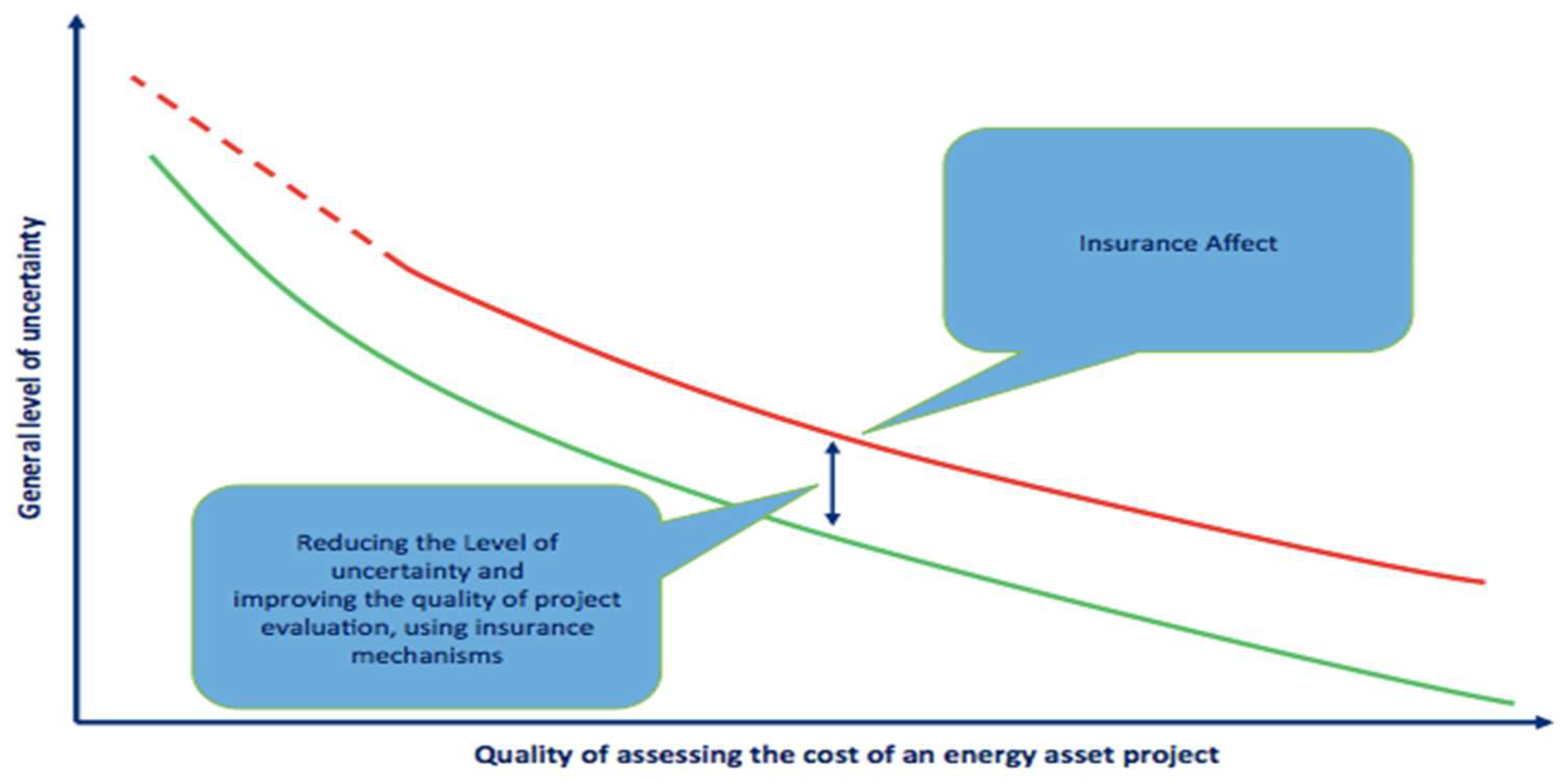





| Sustainable Development Factor Area | Approach to Assessing the Impact of Factors on Ensuring Sustainable Development |
|---|---|
| RES project design | |
| 1. The RES project is an atypical design solution | 0—there is 1—no |
| 2. Exceeding the planned construction period of the RES project over the world average | Difference between the planned construction period of the RES project and the world average construction period for energy assets |
| 3. Availability of a prepared construction site for the RES project | 0—there is 1—no |
| 4. RES production technology | 1—worked out 0—no |
| Experience of project participants | |
| 5. Operator’s experience in RES project management | Number of projects managed by the operator |
| 6. Experience of a supplier of equipment for the RES project | 0—there is 1—no |
| 7. The experience of the general contractor in the construction of the RES project | 0—there is 1—no |
| 8. Experience of the regulator of the customer’s country in the RES project | 0—there is 1—no |
| Geopolitics | |
| 9. Geopolitical tensions between the countries participating in the RES project and the customer country | During the construction of the RES project between the countries of the participants and the country of the customer, there was an aggravation of geopolitical relations |
| Economic conditions | |
| 10. State of GDP of the customer’s country | 1—during the construction of the project in the customer’s country there was a drop in GDP 0—no |
| Accident at RES projects | |
| 11. Accidents at the RES project during construction in the customer’s country | 1—an accident occurred during the construction of the RES project in the customer’s country 0—no |
| Factor area | Approach to determining the significance of factors |
| 12. Cumulative electric power of all RES facilities in the customer’s country | Cumulative electric power of all previously constructed RES projects in the world. Cumulative electric power of all previously built RES projects in the customer’s country. |
| RES Project | Calculation of the Cost of the RES Project at Risk before Insurance, RUB Billion | Calculation of the Cost of the RES Project at Risk after Insurance, RUB Billion | The Effect of a Decrease in the Indicator of the Cost of a RES Project at Risk Due to Insurance, RUB Billion |
|---|---|---|---|
| RES Project 1 |  | 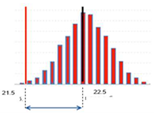 | RES project cost at risk (inherent risk) = 2 RES project cost at risk (residual risk) = 1 ∆Er = 1 |
| RES Project 2 |  | 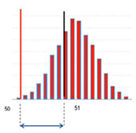 | RES project cost at risk (inherent risk) = 2 RES project cost at risk (residual risk) = 1 ∆Er = 1 |
| RES Project 3 | 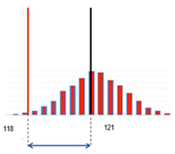 | 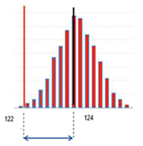 | RES project cost at risk (inherent risk) = 3 RES project cost at risk (residual risk) = 2 ∆Er = 1 |
| Stages of Calculating the Effect of Insuring RES Projects | Stage Description | Results |
|---|---|---|
| Stage 1 | Identification of risk drivers for inclusion in the financial and economic model (FEM). Identification of risk drivers that affect the cost of the project is carried out. | The following risks were identified as affecting the RES project: - Lack of approval of design estimates by the customer (or the developer); - The need to develop additional documentation or amendments at the request of the licensing authority of the customer’s country; - Errors in the preparation of initial data for design (ID); - Errors in the choice of the main technological equipment; - Lack of technology or contractor work experience; - Loss of design data due to loss of information during transmission and untimely accounting of information; - Violation of the technological sequence of work; - Lack of required technologies; - Insufficient reliability of the applied work technology; - IT risk (loss of information, complete or partial failure of IT infrastructure, and violation of license requirements); - Damage to cargo (packaging) during loading or unloading of a vehicle; - Damage to cargo (packaging) during transportation (the possibility of accidents, road accidents, etc.); - Theft of goods during transportation and storage in intermediate warehouses; - Low quality of resources used for construction; - Failures of engineering networks, including failure of external supporting systems (energy and water supply); - Subsidence of soil; - Mechanical damage to equipment as a result of unintentional actions of third parties when loading and transporting goods near or across the construction site; - Inadequate conditions for the performance of construction and installation work, including violation of labor protection standards, harm to the life and health of employees and third parties, including occupational diseases; - Low quality construction and installation works (including installation and flushing); - Delays in the manufacture and delivery of specialized or unique equipment (including delays in heavy equipment); - Deterioration of financial position as a result of consolidation and redistribution of financial flows; - Jointly owned patents not recognized as intangible assets by one of the patent holders. Results of intellectual activity (RIA) is not used by the second patent holder directly in its own production activities; - High volatility in the price of purchased products; - Low quality components; - Change of equipment specification; - Specific conditions for the acceptance of equipment by the customer; - Violation of environmental safety regulations; - Submission by the authors of RIA (their heirs) of requirements to the organization right-holder for payment of remuneration for the use of official RIA; - Contestation of a patent due to non-regulation of relations with the authors of the RIA; - Lack of regulated terms for regulatory approvals. |
| Stage 2 | Determination of FEM drivers in the selection of risks to assess the boundary values for modeling inherent risks affecting the cost of a RES project. | 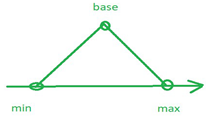 Table 4 |
| Stage 3 | Calculation of the cost of the RES project at risk before insurance, RUB billion. | The results of modeling the inherent risks of the RES project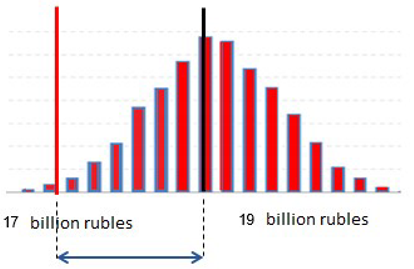 The delta between the percentiles P70% and P90% under the influence of inherent risks is RUB 2 billion. |
| Stage 4 | Assessment of the effect of reducing risks due to the implementation of insurance instruments (effect of the influence of risk, %) | Table 5 |
| Stage 5 | Calculation of the cost of the RES project at risk after insurance, RUB billion (potential effect) | The results of modeling the inherent risks of the RES project, including the insurance program.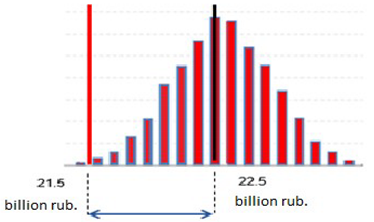 The delta between the P70% and P90% percentiles under the influence of the potential effect from the use of risk insurance instruments is RUB 1 billion. |
| Stage 6 | Assessment of the overall potential effect of the use of insurance instruments for the RES project | RES project cost at risk (inherent risk) = 2 RES project cost at risk (residual risk) = 1 ∆Er = 1 The model for assessing the effectiveness of insurance of the RES project allows us to determine the spread of the project cost values and to assess the effect of reducing the spread of the values by building, at the beginning of the distribution, the cost of the project without the use of insurance instruments and why, accounting for the possible use of insurance instruments. |
| Risks | FEM Drivers | Assessment, % |
|---|---|---|
| Lack of approval of design and estimate documentation by the customer (or developer) | Cost of construction and installation works | 10–20 |
| The need to develop additional documentation or amendments at the request of the licensing authority of the customer’s country | Cost of construction and installation works | 5–10 |
| Errors in the preparation of initial data for design (ID and ITT) | Cost of construction and installation work | 5–10 |
| Errors in choosing the main technological equipment | Cost of equipment | 10–20 |
| The contractor has no technology or work experience | Cost of construction and installation works | 5–10 |
| Loss of design data due to loss of information during shipment and untimely registration of information | Cost of construction and installation works | 1–2 |
| Violation of the technological sequence of work execution | Cost of construction and installation work | 3–5 |
| Lack of required technologies | Cost of construction and installation works | 10–20 |
| Insufficient reliability of the applied work technology | Cost of construction and installation works | 3–5 |
| IT risk (loss of information, complete or partial failure of IT infrastructure, and violation of licensing requirements) | Cost of construction and installation work | 3–5 |
| Damage to cargo (packaging) during loading or unloading of a vehicle | Transportation costs | 2–5 |
| Damage to the cargo (packaging) during transportation (the possibility of accidents, road accidents, etc.) | Transportation costs | 2–5 |
| Theft of goods during transportation and storage in intermediate warehouses | Transportation costs | 2–5 |
| Low quality of resources used for construction | Cost of construction and installation works | 5–10 |
| Failures of engineering networks, including failure of external supporting systems (power and water supply) | Cost of construction and installation works | 20–30 |
| Subsidence of soil | Cost of construction and installation works | 15–20 |
| Mechanical damage to equipment as a result of unintentional actions of third parties when loading and transporting goods near or through the construction site | Cost of equipment | 5–10 |
| Inadequate conditions for the performance of construction and installation work, including violation of labor protection standards, harm to the life and health of employees and third parties, including occupational diseases | Cost of construction and installation work | 10–15 |
| Low quality of construction and installation works (including installation and flushing) | Cost of construction and installation works | 15–25 |
| Delays in the manufacture and delivery of specialized or unique equipment (including delays in heavy equipment) | Construction and installation costs | 5–10 |
| Deterioration of financial position as a result of pooling and redistribution of financial flows | Debt negotiation cost | 10–15 |
| Jointly owned patents are not recognized as intangible assets by one of the patent holders. RID is not used by the second patent holder directly in its own production activities | Operating costs | 5–10 |
| High price volatility for purchased products | Operating costs | 10–20 |
| Low quality components | Cost of equipment | 5–10 |
| Change of equipment specification | Cost of equipment | 5–10 |
| Specific conditions for the acceptance of equipment by the customer | Cost of equipment | 15–20 |
| Risks | The Reducing Risks Effect Due to the Insurance Instruments Implementation (Effect of the Influence of Risk, until %) |
|---|---|
| - Errors in the preparation of initial data for design (ID and ITT) | 50 |
| - Violation of the technological sequence of work | 70 |
| - IT risk (loss of information, complete or partial failure of IT infrastructure, and violation of license requirements) | 100 |
| - Damage to cargo (packaging) during loading or unloading of a vehicle | 100 |
| - Damage to the cargo (packaging) during transportation (the possibility of accidents, road accidents, etc.) | 100 |
| - Theft of goods during transportation and storage in intermediate warehouses | 100 |
| - Low quality of resources used for construction | 50 |
| - Failures of engineering networks, including failure of external supporting systems (energy and water supply | 100 |
| - Subsidence of soil | 100 |
| - Mechanical damage to equipment as a result of unintentional actions of third parties when loading and transporting goods near or across the construction site | 100 |
| - Inadequate conditions for the performance of construction and installation work, including violation of labor protection standards, harm to the life and health of employees and third parties, including occupational diseases | 70 |
| - Low quality construction and installation works (including installation and flushing) | 70 |
| - Delays in the manufacture and delivery of specialized or unique equipment (including delays in heavy equipment) | 50 |
| - Deterioration of financial position as a result of consolidation and redistribution of financial flows | 90 |
| - Low quality components | 50 |
| - Violation of environmental safety regulations | 100 |
Publisher’s Note: MDPI stays neutral with regard to jurisdictional claims in published maps and institutional affiliations. |
© 2021 by the authors. Licensee MDPI, Basel, Switzerland. This article is an open access article distributed under the terms and conditions of the Creative Commons Attribution (CC BY) license (https://creativecommons.org/licenses/by/4.0/).
Share and Cite
Pukala, R.; Kirillova, N.; Dorozhkin, A. Insurance Instruments in Estimating the Cost Energy Assets with Renewable Energy Sources. Energies 2021, 14, 3672. https://doi.org/10.3390/en14123672
Pukala R, Kirillova N, Dorozhkin A. Insurance Instruments in Estimating the Cost Energy Assets with Renewable Energy Sources. Energies. 2021; 14(12):3672. https://doi.org/10.3390/en14123672
Chicago/Turabian StylePukala, Ryszard, Nadezda Kirillova, and Alexey Dorozhkin. 2021. "Insurance Instruments in Estimating the Cost Energy Assets with Renewable Energy Sources" Energies 14, no. 12: 3672. https://doi.org/10.3390/en14123672
APA StylePukala, R., Kirillova, N., & Dorozhkin, A. (2021). Insurance Instruments in Estimating the Cost Energy Assets with Renewable Energy Sources. Energies, 14(12), 3672. https://doi.org/10.3390/en14123672






